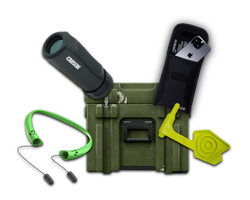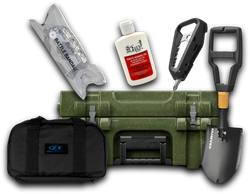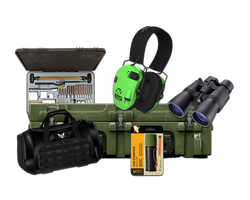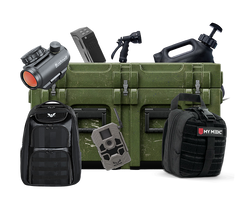What Are Sleeping Bags Made Of: A Comprehensive Guide to Materials and Construction
Table of Contents
- Introduction
- Insulation Types
- Shell Materials
- Lining Materials
- Construction Techniques
- Sleeping Bag Shapes
- Care and Maintenance
- Conclusion
- FAQ
Introduction
Imagine a chilly night in the great outdoors. The stars twinkle above, and the sounds of nature fill the air. Yet, despite the beauty surrounding you, the thought of a cold, uncomfortable night can be daunting. The key to a restful sleep in these conditions lies in an often-overlooked piece of gear: the sleeping bag. But have you ever wondered what sleeping bags are made of? Understanding the materials and construction of sleeping bags is crucial for selecting the right one for your adventures, ensuring warmth, comfort, and durability.
In this blog post, we will dive deep into the anatomy of sleeping bags, exploring the various types of insulation, shell materials, and construction techniques that contribute to their performance. We'll discuss the significance of insulation types—down versus synthetic—and how different construction methods can impact your experience in the field. By the end of this article, you’ll have a comprehensive understanding of what sleeping bags are made of, making you better equipped to choose the right sleeping bag for your outdoor adventures.
This post will cover the following key areas:
- Insulation Types: Understanding down and synthetic fills.
- Shell Materials: Exploring the outer layer of sleeping bags.
- Lining Materials: The importance of comfort and moisture management.
- Construction Techniques: How the assembly influences performance.
- Sleeping Bag Shapes: The impact of design on comfort and warmth.
- Care and Maintenance: Tips for extending the life of your sleeping bag.
- Conclusion: Recap and final thoughts on selecting the right sleeping bag.
Let’s embark on this journey to discover the intricate details of what makes sleeping bags essential gear for outdoor enthusiasts.
Insulation Types
Down Insulation
Down insulation is derived from the soft undercoating of ducks and geese. It has been a popular choice among outdoor enthusiasts for its exceptional warmth-to-weight ratio and compressibility. The quality of down is measured by its fill power, which refers to how much space one ounce of down occupies. Higher fill power means more warmth with less weight, making it ideal for backpacking and camping.
Advantages of Down
- Lightweight: Down sleeping bags are typically lighter than their synthetic counterparts, making them easier to pack and carry.
- Compressibility: Down can be compressed to a fraction of its size, allowing for more efficient packing in your backpack.
- Warmth: Down traps heat effectively, providing excellent insulation in cold conditions.
Disadvantages of Down
- Moisture Sensitivity: Down loses its insulating properties when wet, making it less suitable for damp environments unless treated with a water-resistant finish.
- Cost: High-quality down sleeping bags can be more expensive than synthetic options.
Synthetic Insulation
Synthetic insulation is made from polyester fibers designed to mimic the properties of down. These materials are engineered to provide warmth, durability, and moisture resistance. Popular synthetic insulation brands include PrimaLoft, Climashield, and Polarguard.
Advantages of Synthetic Insulation
- Moisture Resistance: Synthetic materials retain their insulating properties when wet, making them ideal for humid conditions and wet weather camps.
- Cost-Effective: Generally, synthetic sleeping bags are more affordable than high-quality down bags.
- Easy Care: Synthetic bags are machine washable and easier to maintain.
Disadvantages of Synthetic Insulation
- Weight: Synthetic sleeping bags can be heavier than down bags for the same warmth level.
- Compressibility: They do not compress as well as down, which can take up more space in your pack.
Hybrid Insulation
Hybrid sleeping bags combine down and synthetic insulation to provide the best of both worlds. They often feature down in areas where warmth is critical, like the torso, while using synthetic insulation in places more prone to moisture, such as the foot box.
Shell Materials
The shell of a sleeping bag serves as the first line of defense against the elements. The choice of shell material can significantly affect the bag's weight, durability, and water resistance.
Common Shell Materials
-
Nylon: A popular choice for its balance of weight and durability. Lightweight nylon is often treated with a durable water repellent (DWR) finish to enhance water resistance.
-
Polyester: Generally heavier than nylon, polyester is also durable and can be treated to improve water repellency. It is often found in less expensive sleeping bags.
-
Ripstop Fabric: This type of nylon or polyester features a grid pattern that enhances tear resistance. It is commonly used in higher-end sleeping bags.
-
Waterproof/Breathable Fabrics: Materials like Pertex or Gore-Tex are designed to allow moisture vapor to escape while preventing water from seeping in. These fabrics are ideal for wet conditions but can be heavier.
Importance of Shell Materials
The right shell material not only protects against moisture and abrasion but also impacts the weight and packability of the sleeping bag. For example, a lightweight nylon shell can be ideal for backpacking, while a more robust polyester shell may be suited for car camping or less rigorous conditions.
Lining Materials
The lining of a sleeping bag is just as important as the shell. It affects comfort and moisture management, helping to keep you dry and cozy during the night.
Common Lining Materials
-
Nylon and Polyester: These materials are breathable and comfortable against the skin, making them popular choices for sleeping bag linings.
-
Silk: A luxurious option that is soft, lightweight, and breathable. However, it can be more expensive and less durable than synthetic options.
-
Brushed Cotton or Flannel: These materials provide added warmth and comfort, making them suitable for car camping. However, they can retain moisture and are heavier.
Importance of Lining Materials
The lining facilitates moisture transfer away from the body, helping to prevent clamminess during sleep. It also contributes to the overall feel and comfort of the sleeping bag, which can greatly enhance your outdoor experience.
Construction Techniques
The construction of a sleeping bag plays a critical role in its performance, insulation efficiency, and overall comfort. Different construction methods can help minimize cold spots and ensure even distribution of insulation.
Common Construction Techniques
-
Baffles: Many sleeping bags use baffles—chambers that hold insulation in place—to prevent it from shifting and creating cold spots. Baffles can be horizontal or vertical, depending on the design.
-
Box Construction: This technique involves creating separate compartments for insulation, ensuring that each section remains lofted and effective at trapping heat.
-
Sewn-Through Construction: This method stitches the shell and lining directly together, which can create cold spots but is often used in lightweight bags designed for warmer conditions.
-
Differential Cut: This advanced technique involves cutting the lining slightly smaller than the shell, allowing the insulation to loft more effectively and reducing compressive loss.
Importance of Construction Techniques
The right construction method can enhance the thermal efficiency of a sleeping bag, ensuring that it performs well in cold conditions. When selecting a sleeping bag, consider how the insulation is managed within the shell and lining for optimum comfort and warmth.
Sleeping Bag Shapes
The shape of a sleeping bag influences not only its thermal efficiency but also the comfort level for different sleeping styles.
Common Shapes
-
Mummy Bags: Tapered from the shoulders to the feet, mummy bags minimize space and maximize warmth retention. They are ideal for backpacking and cold-weather camping.
-
Semi-Rectangular Bags: These bags offer more room for movement, making them comfortable for those who prefer to shift positions during sleep. They provide a balance between warmth and comfort.
-
Rectangular Bags: Offering the most space, rectangular bags are great for car camping where weight is not a concern. They allow for plenty of movement but may not be as efficient at retaining warmth.
-
Specialized Bags: Some bags are designed specifically for women or children, often featuring additional insulation in key areas to cater to their unique thermal needs.
Importance of Shape
Choosing the right shape can significantly enhance your comfort level in the sleeping bag. If you’re a restless sleeper, a semi-rectangular or rectangular bag may be more suitable, while those seeking maximum warmth in cold conditions may prefer a mummy bag.
Care and Maintenance
To ensure your sleeping bag lasts for many adventures, proper care and maintenance are essential.
Tips for Care
-
Storage: Store your sleeping bag uncompressed in a large cotton or mesh sack to maintain the loft of the insulation.
-
Cleaning: Follow the manufacturer's instructions for cleaning. Most synthetic bags can be machine washed, while down bags often require special care.
-
Drying: After washing, dry your sleeping bag thoroughly to prevent mold and mildew. Use low heat and add clean tennis balls to help fluff the insulation.
-
Repellent Treatments: Consider re-treating the shell with a DWR finish periodically to maintain its water resistance.
Importance of Care
Proper maintenance not only extends the lifespan of your sleeping bag but also ensures that it performs optimally on your outdoor excursions. A well-cared-for sleeping bag will continue to provide warmth and comfort for years to come.
Conclusion
Understanding what sleeping bags are made of is essential for anyone looking to enhance their outdoor experiences. From the type of insulation to the materials used and the construction techniques employed, each aspect contributes to a sleeping bag's performance. By knowing the differences between down and synthetic fills, the importance of shell and lining materials, and the impact of construction and shape, you can make informed choices that suit your specific camping needs.
As you prepare for your next outdoor adventure, consider the sleeping bag that best aligns with your requirements and preferences. Whether you opt for the warmth of down or the reliability of synthetic insulation, choosing high-quality gear is crucial in ensuring a comfortable night's sleep under the stars.
If you’re looking for high-quality sleeping bags and other tactical gear, be sure to check out the Crate Club subscription services, where you can receive curated gear tailored to your outdoor adventures. Explore the Crate Club Shop for an extensive collection of tactical and survival gear that will enhance your preparedness for the great outdoors.
For more information on Crate Club’s offerings, visit the following links:
FAQ
Q1: What is the best insulation for a sleeping bag?
A1: The best insulation depends on your needs. Down insulation is excellent for lightweight and compressible sleeping bags, providing superior warmth. However, if you expect wet conditions, synthetic insulation is a better choice as it retains warmth when damp.
Q2: How should I store my sleeping bag?
A2: Store your sleeping bag uncompressed in a large cotton or mesh sack. Avoid storing it in a stuff sack for extended periods, as this can compress the insulation and reduce its effectiveness.
Q3: Can I wash my sleeping bag?
A3: Yes, most synthetic sleeping bags can be machine washed. However, down sleeping bags require special care. Always check the manufacturer's instructions for cleaning and drying recommendations.
Q4: What shape sleeping bag is best for a side sleeper?
A4: Semi-rectangular or rectangular sleeping bags are ideal for side sleepers, as they provide more room to move and adjust positions throughout the night.
Q5: How do I know what temperature rating I need for my sleeping bag?
A5: Consider the coldest temperatures you expect to encounter and choose a sleeping bag with a rating lower than that temperature. It's also important to account for personal comfort levels, as some individuals may sleep colder than others.
Share this article



